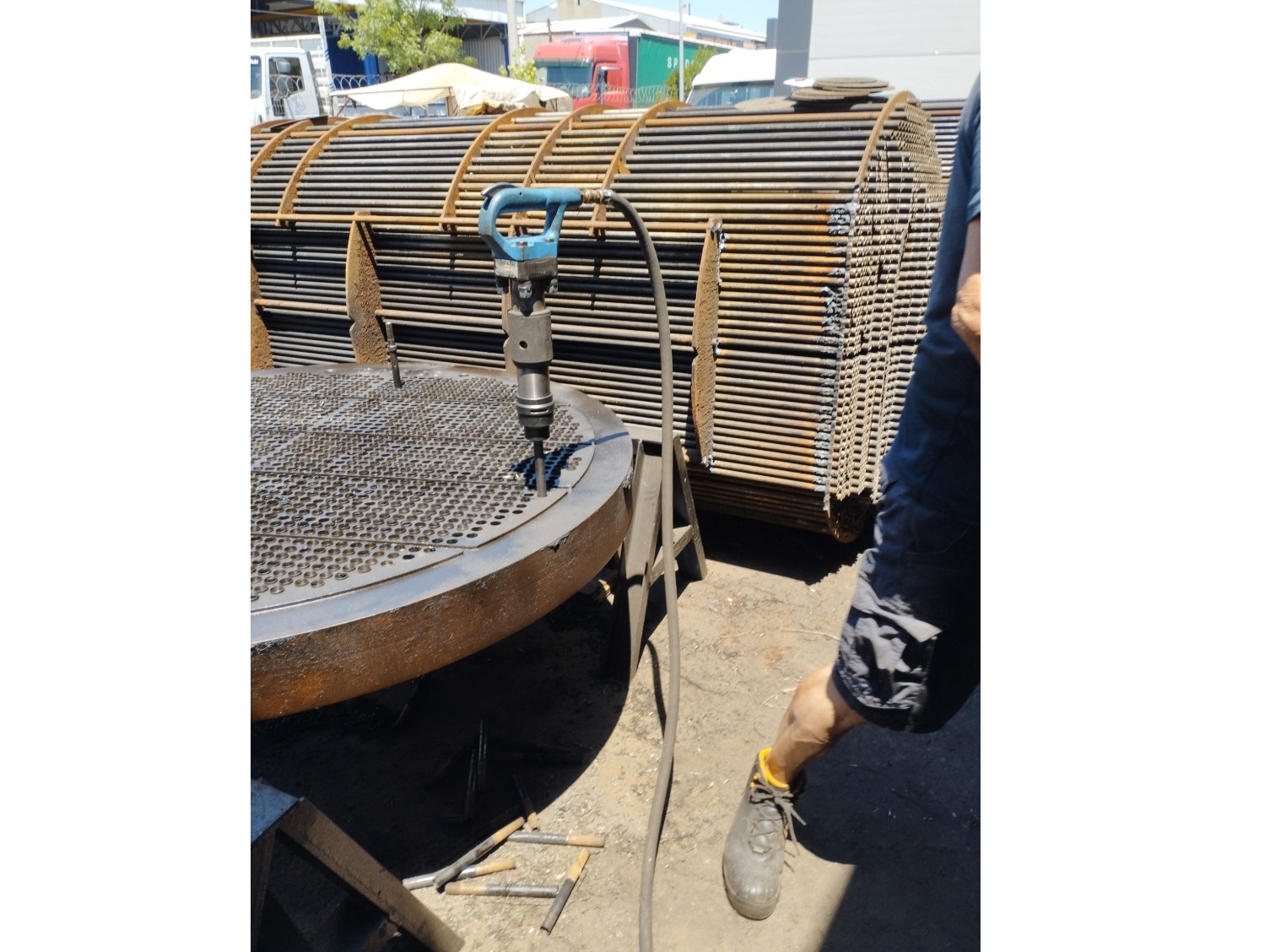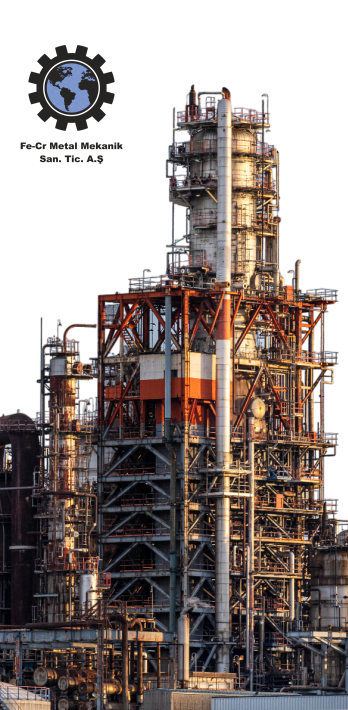.jpg)
Heat exchangers play a critical role in petrochemical and refinery plants, serving as essential equipment for transferring heat between liquids, gases, or heat carrier mediums. Their primary function is to optimize thermal energy within the plant's processes, contributing to efficient and cost-effective operations. Heat exchangers are vital for multiple purposes, including energy conservation, temperature regulation, and product purification:
1. Functions:
- • Heat Transfer: Heat exchangers facilitate the transfer of heat between two fluids (liquid or gas) or between a process fluid and a heat carrier. This function is essential for processes like temperature control, energy recovery, and product purification.
- • Cooling and Heating: They play a vital role in either cooling or heating fluids entering or exiting a process. This temperature regulation is crucial for controlling chemical reactions and ensuring product quality.
- • Pressure Reduction: Heat exchangers can also help balance pressure differences between fluids operating at various pressure levels, contributing to smoother and safer system performance.
2. Working Principle:
- Heat exchangers consist of metal pipes or plates designed to allow heat transfer between two or more fluids.
- Heat transfer occurs across the surface of these pipes or plates. While one fluid flows through the inside, the other fluid passes over the outside, enabling heat exchange between them. The process efficiently transfers thermal energy without mixing the fluids.
3. Design and Types:
- Tube Exchangers: These exchangers feature pipelines arranged parallel or opposite each other. Fluids pass through the tubes, exchanging heat as they flow. Tube exchangers are common due to their ability to handle high pressures and temperatures.
- Plate Exchangers: Comprised of thin metal plates stacked closely together, these exchangers allow fluids or gases to flow between the plates. Their compact design offers high efficiency, making them ideal for processes that require large heat transfer areas in small spaces.
- Air-Cooled Exchangers: These utilize atmospheric air as the cooling medium, making them suitable for applications where water is scarce or restricted. They are frequently used for cooling process liquids or gases.
4. Application Areas:
- Petroleum Refineries: Heat exchangers are used to process crude oil into different fractions and purify the resulting products, ensuring efficient operation.
- Chemical Plants: In chemical manufacturing, heat exchangers regulate temperatures critical to chemical reactions and assist in purifying end products.
- Gas Processing Plants: These systems are crucial for cooling and processing natural gas, as well as maintaining the optimal temperatures needed to prepare gases for storage or distribution.
5. Safety and Maintenance:
- Regular Maintenance: Routine cleaning is essential to remove accumulated deposits that can reduce efficiency and cause corrosion or fouling. Preventative maintenance helps in avoiding unexpected downtime or failure.
- Safety Measures: As pressurized equipment, heat exchangers must be inspected periodically. Safety procedures, such as pressure testing and leak detection, are necessary to ensure they operate safely and in compliance with regulatory standards.
By understanding these critical aspects, the proper selection, maintenance, and application of heat exchangers can significantly improve operational efficiency and reliability in petrochemical plants.
What is the Retube process of exchangers?
The "retube" process in heat exchangers refers to replacing or renewing one or more tubes in the exchanger, typically done when the tubes are damaged, worn out, clogged, or no longer functioning properly. This process is essential for restoring the performance and efficiency of the heat exchanger and preventing operational issues caused by malfunctioning tubes.
Key Steps in the Retube Process:
1.Assessment and Cause Analysis:
The initial step involves assessing the condition of the heat exchanger and identifying issues such as blockages, cracks, corrosion, or other damage in the tubes. A thorough analysis helps determine the cause of the failure and whether retubing is necessary.
2.Removing Pipes:
Damaged or old tubes are carefully removed. This delicate procedure often requires partial or complete disassembly of the heat exchanger to avoid damaging other components.
3. Installing New Pipes:
New tubes are installed according to specific design and material requirements. These new tubes are typically made of the same or more advanced materials, offering improved durability and performance to meet operational needs.
4. Connection and Testing:
After installing the new tubes, the heat exchanger is reassembled, and the new tubes are connected properly. The system is then tested to ensure that the exchanger is functioning correctly and operating at optimal performance levels.
The retube process is crucial for extending the lifespan of heat exchangers, restoring lost performance, and adapting the equipment to new operating conditions. In industrial facilities, regular maintenance and timely retubing of heat exchangers are essential to ensure the continuity and efficiency of operations, minimizing downtime and improving energy savings.





.jpg)
.jpg)
.jpg)
.jpg)
.jpg)
.jpg)
.jpg)
.jpg)
.jpg)
.jpg)

.jpg)
.jpg)
.jpg)
.jpg)
.jpg)
.jpg)
